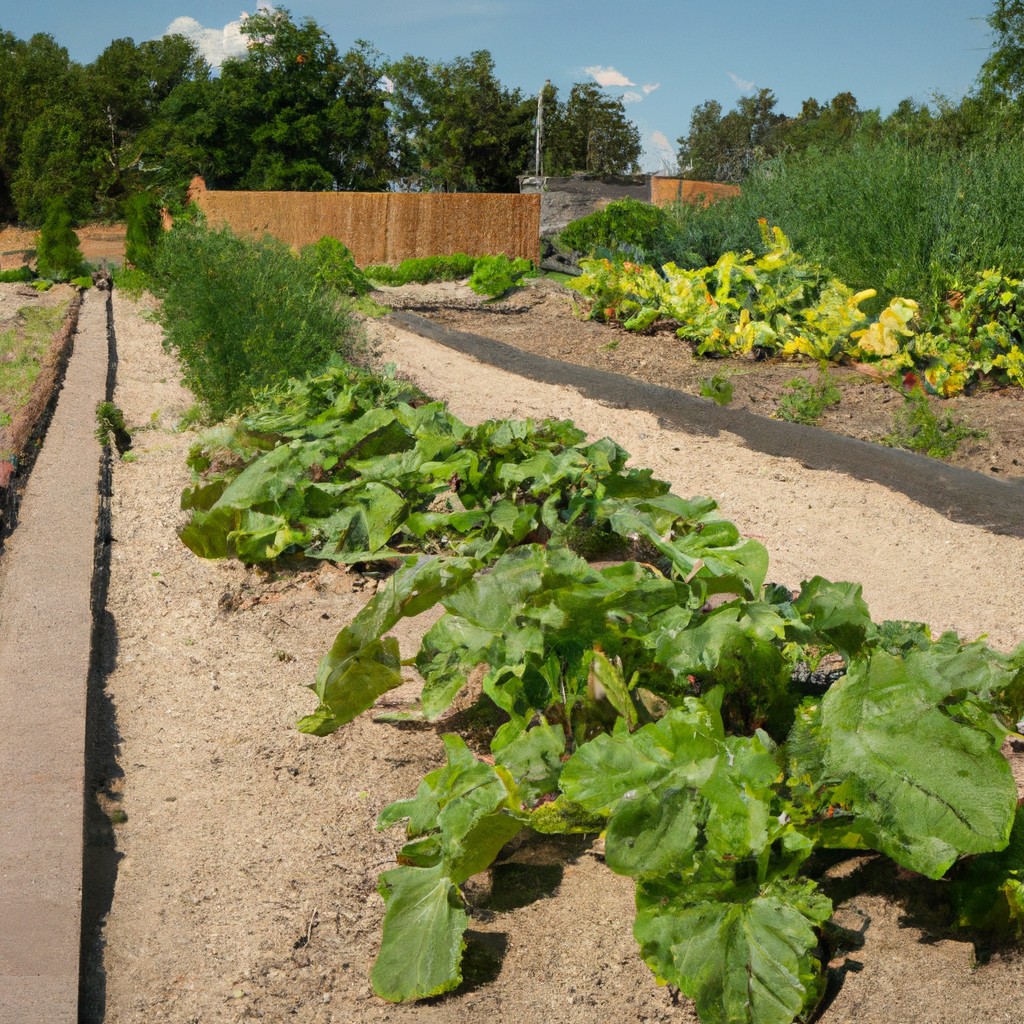Explore the transformative power of regenerative agriculture in the coffee industry and its potential to restore eco-balance, enhance soil fertility, and boost crop yield.
Regenerative agriculture is revolutionizing the coffee industry, offering a sustainable approach that not only improves crop yield but also enhances soil health, biodiversity, and carbon sequestration.
This article delves deep into how regenerative practices are applied in coffee cultivation, the benefits to both the farmer and the environment, and the challenges encountered.
Whether you’re a coffee farmer, a sustainability enthusiast, or a conscious consumer, this comprehensive guide will provide you with all the details about regenerative coffee farming.
Key takeaways:
- Regenerative agriculture improves soil fertility and enhances crop yield.
- Regenerative practices in coffee farming promote biodiversity and pest resistance.
- Traditional coffee farming damages soil and relies on synthetic inputs.
- Regenerative methods reduce soil erosion and improve water efficiency.
- Regenerative coffee farming has economic benefits and mitigates environmental harm.
Look Inside:
Understanding Regenerative Agriculture

Regenerative agriculture is a conclusive set of farming practices that focuses on rejuvenating the soil’s health, improving its organic matter and biodiversity. It surpasses the limitations of traditional organic farming by working with nature instead of against it.
This approach acknowledges the vital role of soil health in boosting crop productivity and farm ecosystem’s resilience. It promotes techniques such as crop rotation, cover cropping, composting, and reduced tillage, which effectively sequester carbon, enhance the soil’s water retention capacity and decrease the need for synthetic inputs.
By imitating nature’s mechanisms, regenerative agriculture creates a sustainable environment where life can thrive, without compromising future generations’ ability to do the same.
Importance of Regenerative Agriculture in Coffee Farming
Implementing regenerative methods enhances the quality and productivity of coffee farms. These practices involve treating the farm as an interconnected ecosystem, promoting biodiversity through cover crops, direct seeding, and mulching, resulting in healthier, more resilient coffee plants.
These techniques go beyond mere sustainable farming – they actively rejuvenate the land by enhancing its fundamental biological processes. The soil, enhanced by organic matter from cover crops, retains more water and nutrients, providing an optimal environment for coffee growth.
Moreover, biodiversity increases pest resistance, reducing the need for harmful pesticides. This not only yields healthier crops but also mitigates the carbon footprint of coffee farming by sequestering carbon into the enhanced soil. Thus, regenerative agriculture ensures superior coffee quality while contributing to a healthier planet.
Traditional Coffee Farming Vs Regenerative Methods
Traditional coffee farming often involves monoculture which leaves soils depleted and susceptible to pests and diseases. Extensive use of synthetic fertilizers and pesticides is common, causing harm to the surrounding ecosystems.
On the other hand, regenerative agriculture sees coffee plants grown amid a diverse array of complementary plant species. This approach enhances soil health, reduces pest issues, sequesters carbon, and mitigates the need for chemical inputs. The biodiversity also provides natural pest control and a more resilient system against diseases and climate change.
Apart from ecological benefits, the diversified crops also offer additional income streams for farmers, thus improving farm economy.
The comparison elucidates the clear contrast between traditional farming and regenerative practices, underlining the benefits of the latter.
How Regenerative Practices Benefit Coffee Crops
Regenerative practices serve to enhance the productivity and resilience of coffee crops. Firstly, they mitigate soil erosion common on coffee plantations due to the frequent rains and sloping landscapes. By increasing organic matter and plant diversity, these practices improve soil structure and stability, safeguarding against the harmful effects of excessive water runoff.
Additionally, these methods boost soil fertility, leading to more robust and healthy coffee plants. This occurs as the regenerative tactics introduce a diverse microbial ecosystem into the soil, which facilitates the recycling of nutrients and bolsters plant vitality.
Importantly, the strategy aids in pest management. Diverse plant species grown in conjunction mean increased resilience against pest attacks and diseases. Instead of relying heavily on chemical treatments, the resilient bio-diverse ecosystem naturally suppresses pests and diseases.
Moreover, these practices result in better water efficiency. By improving soil organic matter, the water holding capacity of the soil is increased, enabling coffee plants to withstand periods of drought more effectively.
In all, the long-term application of regenerative methods results in coffee harvests that are more bountiful and consistent year after year, ensuring a sustainable source of income for farmers.
Environmental Impact of Coffee Production
Coffee, as we know it, comes at a significant environmental cost. Conventional methods of coffee cultivation often entail deforestation, causing loss of biodiversity and disruption of natural ecosystems. Further, heavy use of chemical fertilizers and pesticides can lead to water pollution, poisoning aquatic life and contaminating drinking water supplies.
High volumes of water are involved in coffee processing, resulting in large amounts of wastewater. The carbon footprint is also notable, considering the energy consumed in processing, packaging, and transportation.
However, through the application of regenerative agriculture practices, most of these harmful effects can be mitigated, transforming coffee farming into a more sustainable and ecologically beneficial activity.
Steps for Implementing Regenerative Techniques in Coffee Farms
Starting with a soil analysis allows farmers to understand the condition and nutrient requirements of the soil. Based on test results, farmers may need to amend the soil using organic matter or introduce microorganisms to enhance its health and fertility.
Secondly, adopting agroforestry, a system that integrates trees into cropping systems, can enhance biodiversity and provide shade for coffee plants – critical for quality coffee production. The selection of tree species can also contribute to soil fertility, pest control, or additional income streams like fruit or timber production.
Thirdly, water management is crucial due to coffee’s sensitivity to waterlogging and drought. Installing a proper irrigation system, employing rainwater harvesting techniques, and creating contour drainages can help in efficient water usage.
Lastly, crop rotation with leguminous plants or cover cropping between harvesting seasons can safeguard against soil erosion, improve nutrient cycling, maintain soil fertility, and provide protection against pests and diseases.
Regular monitoring is required to assess the success of these techniques and make any necessary adjustments.
Crop Nutrition, Fertilisers & Regenerative Agriculture
When it comes to promoting crop nutrition, regenerative farming techniques prove incredibly indispensable. They rely majorly on organic compost, animal manures, and cover crops to nourish the soil, enhancing its natural fertility and microorganism biodiversity.
This invaluable organic matter not only provides critical nutrients to the coffee plants but also improves soil structure and water retention capacity, creating optimal growing conditions.
Switching from chemically-intensive fertilizers to regenerative techniques helps mitigate nutrient runoff and soil degradation, contributing notable strides towards sustainable and eco-friendly coffee cultivation.
However, the smooth transition requires comprehensive knowledge on the appropriate timing and accurate composition of organic fertilizers to ensure balanced nutrition for the coffee crops while preserving soil health.
Economic Aspects of Regenerative Coffee Agriculture
With the adoption of regenerative practices, coffee farmers can gain multiple economic benefits. A distinct one is the potential increase in soil fertility, which can lead to higher crop yields and, consequently, increased income.
Moreover, regenerative farms, over time, foster a resilient ecosystem that can better withstand the impacts of extreme weather events, diseases, and pests. This resilience translates into reduced costs for synthetic inputs and farm recovery post-disasters, further enhancing financial sustainability.
Notably, there’s a growing market for sustainably-sourced coffee, allowing farmers practicing regenerative agriculture to potentially command a premium price for their produce. However, the transition may involve short-term costs and requires knowledge-intensive management, factors that may influence a farmer’s decision to adopt regenerative practices.
Challenges and Solutions in Regenerative Coffee Agriculture
Transitioning to regenerative practices can present a set of difficulties. Among the most common are initial costs, time intensiveness, and the need for specialized knowledge and training. Some coffee farmers, particularly those working on a smaller scale, can find these hurdles intimidating.
However, there are several methods to overcome these issues. For initial cost concerns, many governments and non-profit organizations offer grants and loans designed to support sustainable farming practices. On the matter of time, it’s worth noting that while regenerative farming does require thorough planning and implementation, the long-term benefits such as reduced reliance on expensive synthetic fertilisers and increased crop resilience typically outweigh the initial investment.
Regarding the requirement for specialized knowledge and training, many organizations provide resources and education. Educational programs on regenerative agricultural practices exist online, offering beginners’ courses to advanced certifications. By collaborating with local farmer cooperatives, farmers can share knowledge, learn new techniques, and pool resources.
In conclusion, while challenges definitely exist in the transition to regenerative coffee agriculture, the solutions, both existing and emerging, can pave the way for a more sustainable and resilient coffee industry.
Real-life Examples of Regenerative Coffee Farms
One shining beacon of change is Finca El Injerto, a coffee estate in Guatemala. This farm has adopted the principles of regenerative agriculture, using worm compost to enhance soil fertility and integrating trees to boost the farm’s biodiversity. As a result, they’ve witnessed a drastic improvement in their coffee yield and quality.
Likewise, The Puroast Coffee company in Venezuela practices shade-growing techniques, reducing soil degradation and promoting wildlife diversity. They also harness the natural cycles of the environment, using the rainy season’s water runoff in irrigating their coffee plants.
On another part of the globe, the Hama Cooperative in Ethiopia has 1500 active members dedicated to organic farming. They avoid the use of synthetic fertilizers, instead relying on traditional composting methods. By doing so, they allow nature to flourish, proving that regenerative farming of coffee is achievable on a larger scale.
Future Trends in Regenerative Coffee Farming
Looking ahead, several promising trends indicate a hopeful future for regenerative coffee farming. There is a noticeable shift towards farm diversification, where coffee is intercropped with other species upgrading biodiversity, soil health, and pest resistance.
Utilization of organic compost is also on the rise, leaning away from synthetic fertilizers that deplete the land. Moreover, a sense of community is being fostered as farmers worldwide share their experiences and success stories with regenerative practices to inspire and educate others.
Finally, consumers are becoming increasingly mindful of their purchasing power, favoring products demonstrating sustainable practices, which encourages more coffee growers to transition into regenerative farming. Collectively these trends indicate a future where regenerative practices become not only the norm but the expected standard for the global coffee industry.
FAQ
What is regenerative coffee farming?
Regenerative coffee farming is an innovative agricultural approach where intercropping is employed, allowing for the growth of vegetables alongside coffee plants, enhancing soil biodiversity, and fostering a symbiotic relationship between farmers and nature.
How sustainable is coffee farming?
Coffee farming can have significant negative environmental impacts, including chemical runoff into rivers, biodiversity loss, soil erosion, and even deforestation.
How much deforestation is caused by coffee?
Each cup of coffee consumed is estimated to cause the destruction of approximately one square inch of rainforest, thereby making coffee a prominent contributor to deforestation.
What farming methods are used to grow coffee?
Coffee is predominantly cultivated using shade-growing methods, often within forest understories or on plantations planted with shade trees to allow for optimal plant spacing.
What role does shade-grown coffee play in promoting biodiversity?
Shade-grown coffee promotes biodiversity by providing a habitat for various wildlife, including numerous bird species, insects, and other small animals, contributing to a balanced and diverse ecosystem.
How does direct trade contribute to sustainable coffee production?
Direct trade contributes to sustainable coffee production by fostering close relationships between farmers and buyers, ensuring fair prices, and often involving practices that benefit the environment and local communities.
What are the benefits and challenges of converting conventional coffee farms to organic farms?
Converting conventional coffee farms to organic farms offers benefits such as improved soil health, biodiversity and cost-effectiveness in the long run, but challenges include high initial financial costs, a decrease in yield during the transition period, and potential for crop disease and pest infestation due to a lack of synthetic pesticides.




